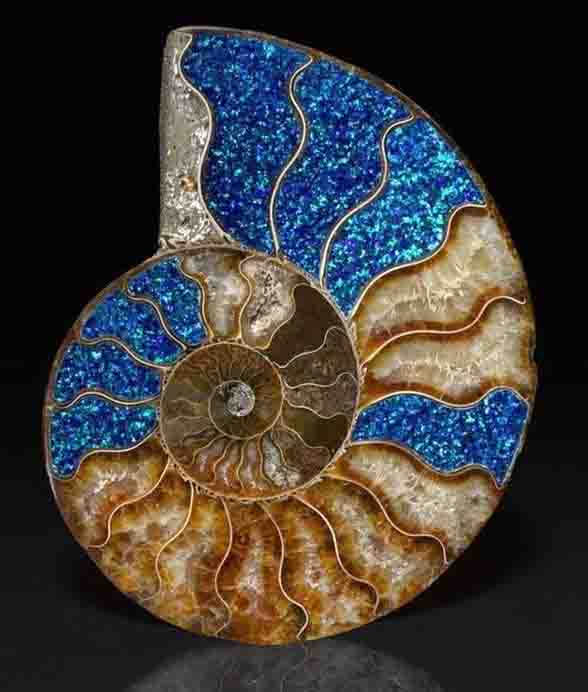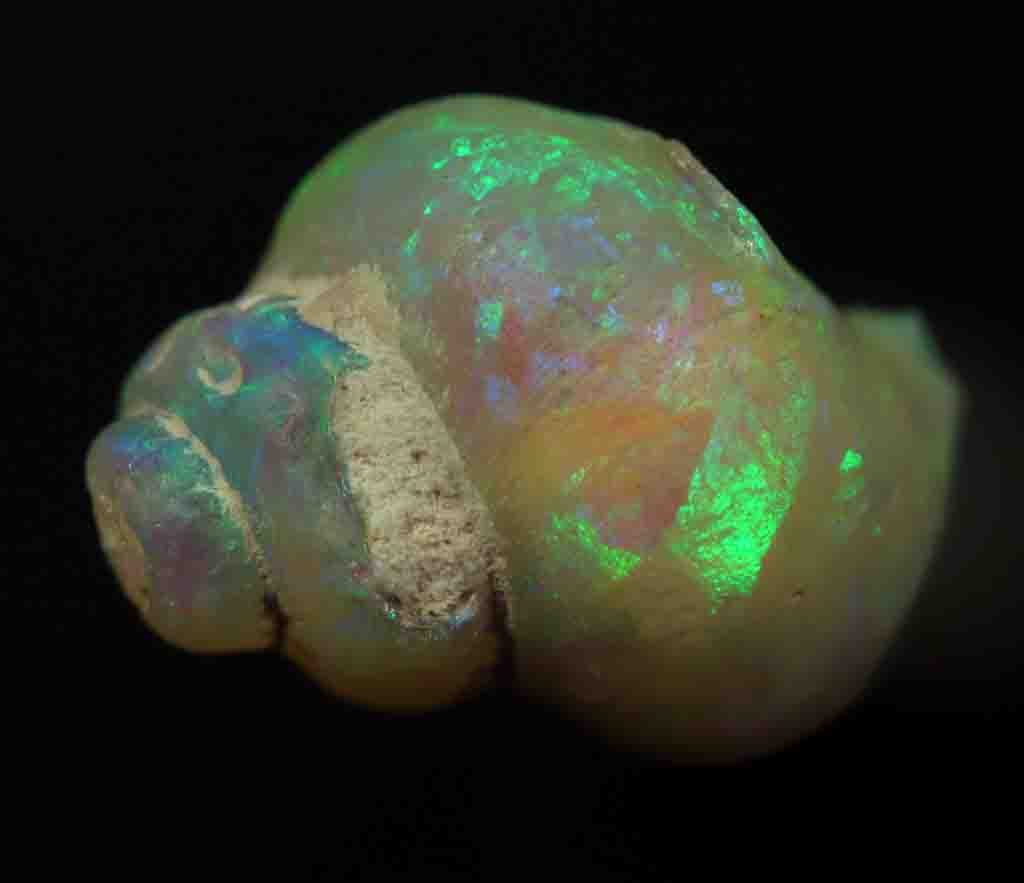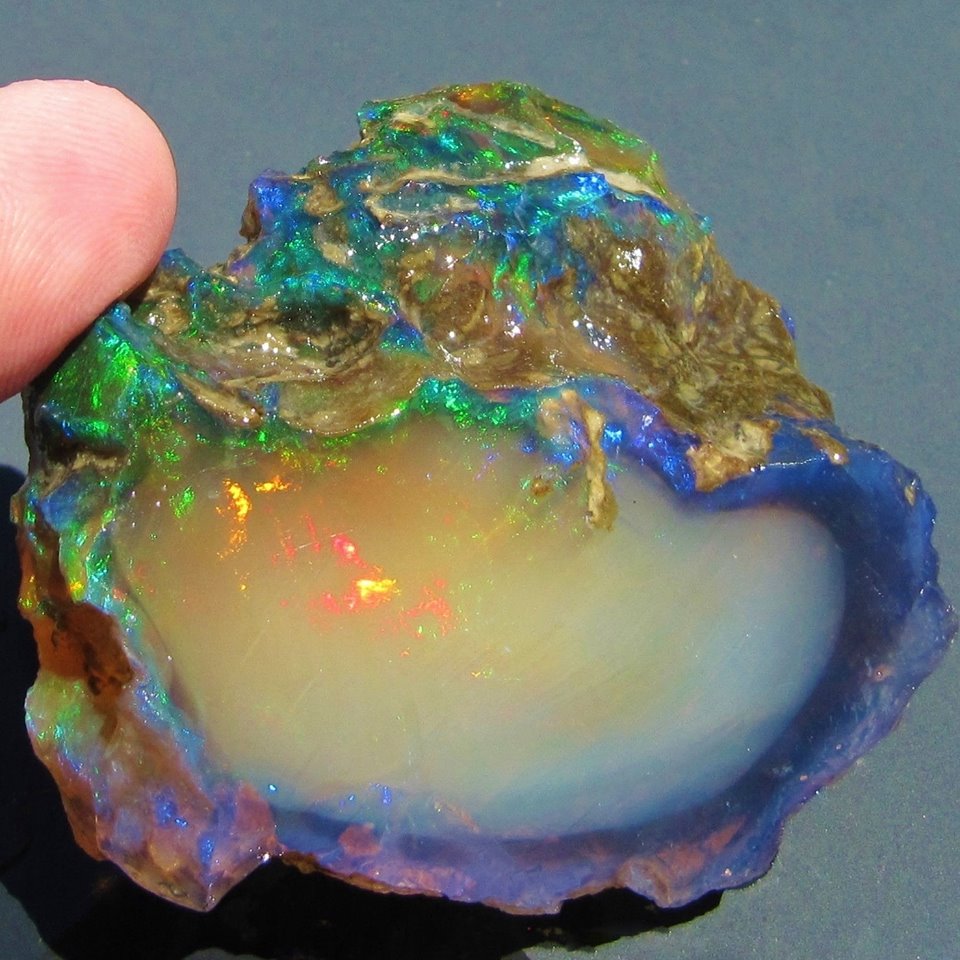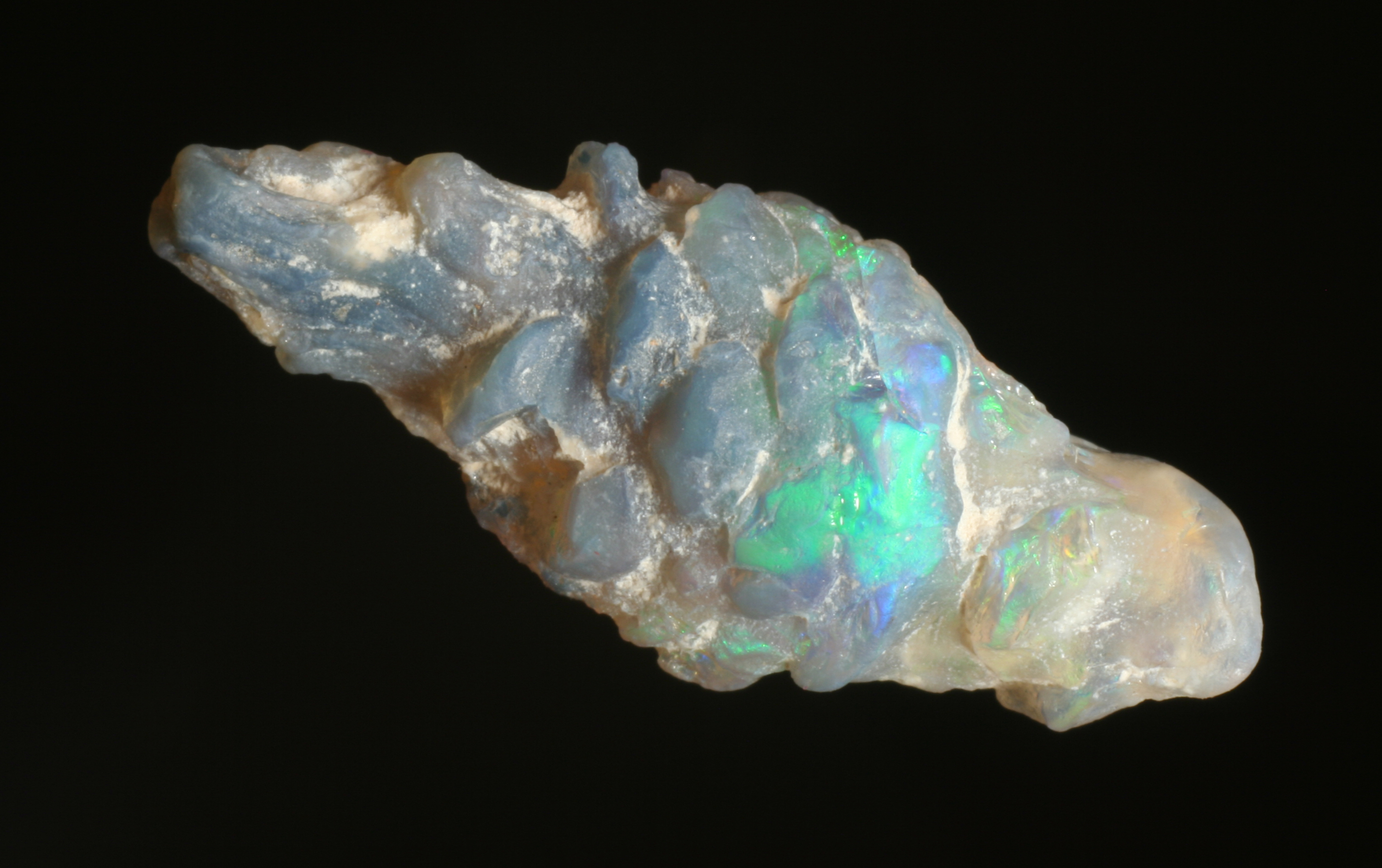

The lower jaw of Weewarrasaurus pobeni. Image credit: Bell et al, doi: 10.7717/peerj.6008



The lower jaw of Weewarrasaurus pobeni. Image credit: Bell et al, doi: 10.7717/peerj.6008

It is extremely rare for conditions to be right for formation of fossils; and even more rare for opalised fossils to form. Usually, only the hard parts of living things fossilise – for example seed pods, wood, teeth, bones and shells. This often happens after the plant or animal (or a part of it) is buried in sand or other sediments that slowly turn to stone.
Opal forms in cavities within rocks. If a cavity has formed because a bone, shell or pinecone was buried in the sand or clay that later became the rock, and conditions are right for opal formation, then the opal forms a fossil replica of the original object that was buried. We get opalised fossils of two kinds:
1) Internal details not preserved: Opal starts as a solution of silica in water. If the silica solution fills an empty space left by a shell, bone etc that has rotted away – like jelly poured into a mould – it may harden to form an opalised cast of the original object.
Most opalised shell fossils are 'jelly mould' fossils – the outside shape is beautifully preserved, but the opal inside doesn’t record any of the creature’s internal structure.
2) Internal details preserved: If the buried organic material hasn’t rotted away and a silica solution soaks into it, when the silica hardens it may form an opal replica of the internal structure of the object. This happens sometimes with wood or bone.
http://www.geologypage.com/2017/04/opalised-fossils-form.html

Ammonite

Snail (gastropod)
Belemnite ("Belemnites were superficially squid-like. They possessed ten arms of equal
length studded with small inward-curving hooks used for grasping prey."[2]-Wikipedia)

Fossil Wood

Ammonite

Pine cone
Opal is a hydrated amorphous form of silica (SiO2·nH2O); its water content may range from 3 to 21% by weight, but is usually between 6 and 10%.
Because of its amorphous character, it is classed as a mineraloid, unlike crystalline forms of silica, which are classed as minerals.
It is deposited at a relatively low temperature and may occur in the fissures of almost any kind of rock, being most commonly found with limonite, sandstone, rhyolite, marl, and basalt. Opal is the national gemstone of Australia.[4]
There are two broad classes of opal: precious and common.
Precious opal displays play-of-color (iridescence), common opal does not.[5]
Play-of-color is defined as “a pseudochromatic optical effect resulting in flashes of colored light from certain minerals, as they are turned in white light.”[6]
The internal structure of precious opal causes it to diffract light, resulting in play-of-color.
Depending on the conditions in which it formed, opal may be transparent, translucent or opaque and the background color may be white, black or nearly any color of the visual spectrum.
Black opal is considered to be the rarest, whereas white, gray and green are the most common.
https://en.wikipedia.org/wiki/Opal
A real Fred Flintstone pet Dino.
There, they may encounter silica minerals in the water, the solution that makes opal.
...
I just looked up opal on Wiki. It’s amorphous and has a similar hardness to glass, so does that mean it’s a naturally occurring glass?
yoo-hoo...
Because the critter was small they decided it was timid? Has anyone ever known a timid Chihuahua?